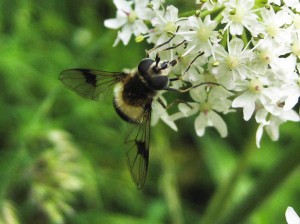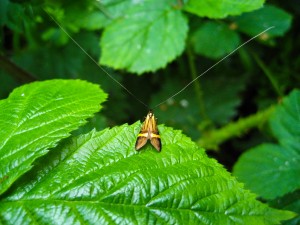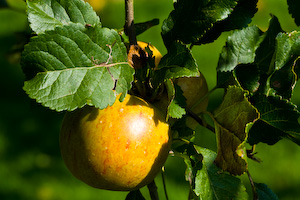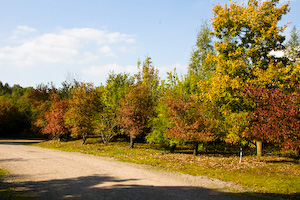I was fortunate enough to tag along a guided walk with the eminent cuckoo expert and behavioural ecologist Nick Davies at Wicken Fen. During an hour and a half’s walk he imparted a wealth of information about cuckoos (and does a fantastic cuckoo call that had me and the cuckoos fooled) and their ‘hosts’ at Wicken Fen, Reed Warblers.
Reed Warblers spend their winters south of the Sahara and then travel back to Europe each spring – they come back to the same spot each year to breed – an amazing bit of navigation! The males will sing and sing until he pairs up. Then his songs become much shorter – one way to tell an unpaired male.
Reed warbler nests are beautifully woven around reed stems, the female starting off by anchoring in some spider silk and then weaving the nest around herself to make perfect fit. She lays one egg per day until she has four eggs. Unless, of course, she is spotted by a cuckoo. The cuckoo, who only lays in the afternoon, waits until the nest is unguarded, swoops down, swallows one of the reed warbler’s eggs and replaces it with her own. All in a matter of seconds. If the cuckoo has missed her chance and the eggs are all there, she will eat all of the eggs to force the reed warblers into starting a second batch, then, she will be watching and waiting for her opportunity. Each cuckoo will only parasitise the one species – at Wicken it is Reed Warblers. The cuckoo’s eggs will be a perfect match for colour and marking, but are almost imperceptibly bigger.
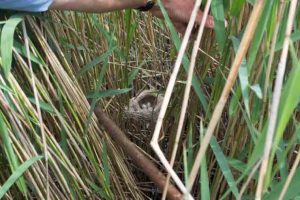
Once the cuckoo hatches of course it will eject the remaining eggs or chicks from the nest. The reed warblers will continue to feed their giant youngster, the colour of the gape and the pitch and sound of the cuckoo begging for food fools them into thinking they are feeding a brood, pushing them to bring more food than they would for one chick alone.
It seems as though all should be well for the cuckoo as there are reed warbler nests every 20 metres or so along the lodes (man made waterways within the fens). But, sadly it isn’t so. Cuckoos have suffered a massive decline in recent decades. Or, at least cuckoos in England have – Scottish cuckoos seem to be doing OK. Wicked has mirrored this decline. Thirty or so years ago there were about 15 female cuckoos laying in the fen, with the result that about 10% of nests were parasitised. Now, it is down to just two cuckoos, with only two or three per cent of nests parasitised. The difference between Scottish and English cuckoos’ success could all be down to climate change. The two sets of birds take different routes to their sub-Saharan wintering grounds. English cuckoos go through Spain, whereas Scottish cuckoos choose a route through the Po valley in Italy. Much of Spain has suffered severe droughts over the last few decades meaning it is more difficult for the cuckoos to feed and put on enough weight to make it over the Sahara. However, this might not be the only reason, and more answers will only be revealed as we learn more about this elusive bird. The future remains uncertain.
For more information about the cuckoo tagging project see the BTO’s website.
If you want to learn more about cuckoos, then please consider buying the excellent book, Cuckoo: Cheating by Nature, by Professor Nick Davies. It contains a wealth of information and is well worth a read.
